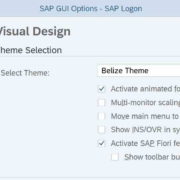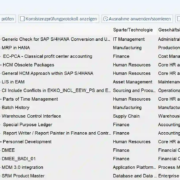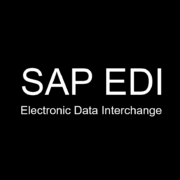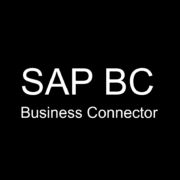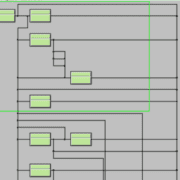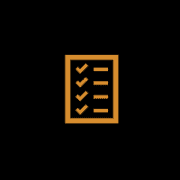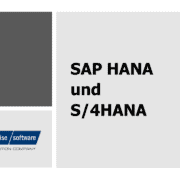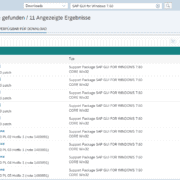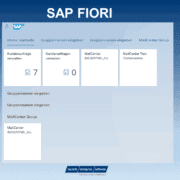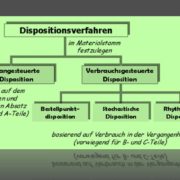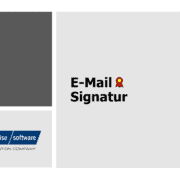SAP SD Checklist Introduction – Brief Analysis Sales
As part of the short analysis, an overview of the scope of an SD introductory project is to be obtained. In particular, it is a matter of recognizing functions and requirements that are not covered by the function list. It is not a question of how certain requirements can be mapped in the system !
Also answer the following questions of the short analysis checklist:
- today’s system world
- Systems to be replaced
- required interfaces
- Number of scheduled users
- Volume
Organization
The examination of the sales organization can generally indicate increased project effort if there is a complex structure. (transfers, cross-company code transactions, forms / message control, master data organization, mapping of the structure in R/3, different design of business processes).
- In which organizational units does the company present itself on the market? (brands, distributors, …)
- What are the different distribution channels? (sales to end users, retailers, distributors, subsidiaries, export, …)
- Are there sales offices / external warehouses?
- How is sales organized internally? (functional breakdown into departments, field service structure, …)
Quantity scaffolding in sales
Number of sales employees ……………………………………………………………………………
Number of customers…………………………………………………………………………………………………
Number of items ……………………………………………………………………………………………………………
Number of prices / conditions ……………………………………………………………………………….
Number of offers / month …………………………………………………………………………………………..
Number of orders / month …………………………………………………………………………………….
Number of delivery notes / month …………………………………………………………………………..
Number of invoices / month …………………………………………………………………………..
Number of positions per order …………………………………………………………………………..
Number of customer material names ……………………………………………………..

Pre-sale phase
Some PC solutions with connection of mobile workers via laptop are used to support sales activities. Is the CAS component of the R/3 to be used or, if necessary, should interfaces to external sales support systems be created?
- Is there support for the pre-sale phase? (planning of visit dates, management of interested parties, mailing campaigns, visit reports, etc.)
- Are quotes to be created and managed via the R/3 system?
Customer Service / Service
If customer service / service is offered, it must be clarified whether the use of SM functionality is necessary or whether processing in the SD standard is possible.
- How are repairs of customer-owned equipment handled by the customer?
- How are repairs carried out by customer-owned devices in-house?
- Is there a service/maintenance plan
- Is the field technician connected to the system? (Laptop connection with offline processing)
Job handling
This is not so much about detailing processes that can be decompartable in the standard. Rather, it is intended to identify processes that do not easily fit into the standard. In the case of special features, it is necessary to check the extent to which system support is required. Special processes of PC island solutions are often supported!
- Which variants of sales orders can be distinguished, what are the special features of the order types? (e.g.: immediate orders, warehouse sales, customer individual production, route orders, scheduling agreements, repair/ service orders, consignment, loan goods, cash sales, delivery of customer goods, …)
- Are there any registration aids for order entry? (copy functions, sample jobs)
An investigation is only useful if large volumes have to be processed; especially if individual articles logically belong together.
Functions in order processing
The functions availability check / demand handover, pricing, subsequent compensation, credit limit check, commission settlement, batch determination, serial number management, item listing / item exclusion, BOM processing must be examined. on behalf of the Check whether the SAP standard fits in these areas. It is also necessary to check whether other functions are taking place during order processing.
- Is the availability of the goods checked when the order is entered?
- What elements are considered in an availability check? (sales orders, inventory, production orders, purchase orders, production schedule, …)
- Can the availability check be multi-stage? (Check the existence of item B if A is not available; inspection of components of a BOM)
- Is a possible delivery date determined by machine? Is the appointment set cross-position?
- Is an availability check performed when the delivery is created?
- Can goods be reserved for specific sales orders?
- Are requirements from sales orders taken into account in procurement planning? How is these requirements handed over?
- Are prices or discounts determined by machine when entering an order? What elements can influence pricing? (customers, items, customer group, acceptance quantity, sales channel, manufacturing costs, …)
- Are there any indications of special features that cannot be defigured via the condition technique?
- Are lines of an order grouped for pricing purposes?
- Are there price elements that are determined at a later date but have to be taken into account in the invoice? (Delkredere, freight )
- Are there any retrospective compensations that depend on sales? What criteria can influence these remunerations?
- What criteria and how is the turnover for the expostated remuneration determined?
- Are commissions paid? What are the criteria for paying commissions? How is the commissions settled?
- Is the customer’s credit limit checked when the order is entered? Which elements are taken into account in the audit.
- Are orders automatically blocked in the absence of creditworthiness? How is the release done?
- When entering an order, is it checked whether the customer is allowed to purchase the desired goods? (embargo, item listing, …)
- Are there order-specific BOMs (resolution of BOMs on the order; configuration of complex products on behalf)?
- Is there batch management for saleable products? How is the batch determined for an order/delivery?
- Are saleable products marked with a serial number? What is the function of this serial number?
Shipping processing
- In what form are the deliveries created?
Is the required information available to the clerk in the case of manual packing slip creation or is additional programming required? - What criteria should be taken into account when creating deliveries? (availability of goods, delivery priority, shipping capacity, transport route, …)
- Can the standard collection go-to be used to create the delivery notes if machine creation is required?
- Are partial deliveries allowed?
- Do you need to consider other criteria when creating partial deliveries? (value of delivery, degree of delivery, quota, …)
This question must be examined especially in the case of large volumes!
- Is there a machine bin management?
How to design an interface to the LVS system, is WM used or external systems?
- With the help of which documents the goods are picked?
- Are packages determined or manually supplemented in the delivery?
To what extent is packaging supported by the system?
- Are deliveries summarized in shipping for further processing (e.g. compilation of transports)?
- Are freight costs determined in shipping?
- How is the shipping method determined? (delivery by truck, post, DPD, …)
Is there a machine determination depending on weight or other criteria?
- What documents are created by the system in shipping? (delivery note, bill of lading, packing list, …)
Billing
- How are the invoices created? (collection process, individual creation)
- Are there different forms of invoicing? (proforma invoices, collective invoices, accrual invoices, invoice lists, …)
- Are down payments or installment payments to be taken into account?
- How does the invoice get to the customer (post, EDI, …)? In any case, does the recipient of the invoice emerge from the invoice address?
- Is it necessary to sort the print output to summarize invoices for shipping? (Central regulation)
- Are there different billing forms?
- Documents with different forms and layout, how to control the forms?
- Which types of credit can be distinguished? ( Returns, price corrections, …)
- Are there any special forms of credit memos that indicate previously unnamed business processes?
Documents in Sales
- Which documents are to be created as part of order processing? (offers, order confirmations, pro forma invoices, delivery notes, …)
- Where are documents that are not provided for in the standard or require extensive system settings (such as export documents)
Statistics
- Are there sales statistics that are still to be compiled unchanged (e.g. for group reporting)?
- What elements should be taken into account in these statistics? (e.g. customer, item group, month, …)
Here it should be pointed out once again that only the statistics of the SAP standard are offered in the scope of functions. Is there a need to draw attention to this point in the offer due to extensive statistical requirements on the part of the customer?
- Is a machine transfer of old statistical data mandatory (for comparison with previous periods )
- Adoption of statistics-old data is in any case additional effort
Other
- Is there a machine data exchange with business partners?
- Is there a hierarchical structuring of the customer base?

Other interesting links

